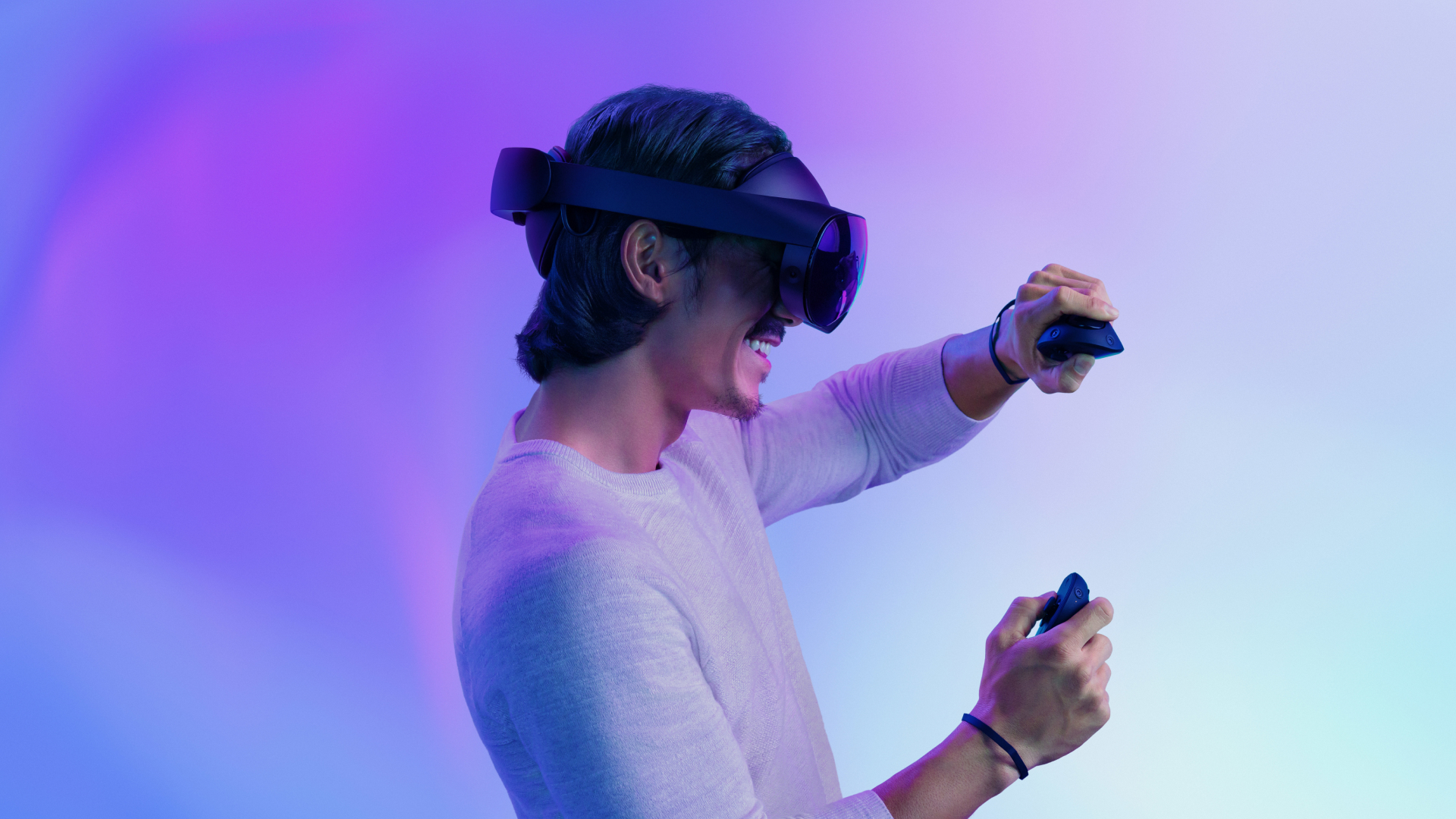We had the good fortune to be among the first to try out Quest Pro, an intriguing new standalone VR MR headset, when it was officially introduced. As far as we’re concerned, Quest 2 is a VR headset. Given that it was clearly far better at VR than AR at launch, and the majority of its actual use reflects that, despite the fact that it has added some passthrough AR features since then. Quest Pro, on the other hand, is the first Meta headset that is capable of VR, AR, or any combination of the two, making it a mixed reality headset.
Thoughts
This is mainly because of the improved sensors on the headset, which offer a clearer passthrough image that is fully full-color and a more realistic portrayal of the environment. Quest Pro is truly opening the door to genuine AR experiences thanks to its “open” peripheral design, which maintains a connection between your virtual perspective and the actual environment. But it will take some time before developers figure out what makes this form of AR so fascinating.

I recently went to the Meta headquarters to see Quest Pro for myself, and while there, the business led me through a few demos. In contrast to the typical VR experience, where I put on the headset and the developers outside transform into voices coming from another level, I was able to put on Quest Pro almost without our conversation being interrupted. That’s because after putting on the headset, I saw a pretty high quality picture of the surroundings that seemed realistic enough for me to be able to carry on a conversation as if there weren’t a piece of technology in the way.
Vision
With the headset on, I was suddenly able to see portions of the virtual world in front of me, even though it still seemed like I was standing there next to them. Though this comes with the not minor trade-off of lowering the resolution of the actual world, the larger field-of-view and entirely opaque virtual things surrounding me seemed far more substantial and ‘present’ in the room with me than the numerous transparent AR headsets I’ve previously used.
It is evident that Quest Pro has strong MR capabilities. When given a single device that flexibly offers all of those alternatives, the industry as a whole won’t likely grasp where and why.

The majority of the app demonstrations I saw naturally benefited from the usage of MR by giving me the impression that I didn’t leave the room fully when I put on the headset. As a result, “simple” apps like Painting VR, which effectively allows you to create a painting studio in the space you’re in, become more alluring. By arranging your virtual workspace around your physical space using passthrough augmented reality, you can work around obstacles and even put virtual brushes on a physical table. Although it’s a pleasant novelty, it’s not a necessary addition to the app.
Opportunities
It’s early though, and developers haven’t yet had much time to plumb the headset’s new capabilities and form-factor to figure out exactly what they will do best. Over time I expect everyone will start to understand where to lean into AR for specific apps, and where to lean into VR.
But Quest Pro isn’t just Quest 2 with passthrough. In addition to being significantly more compact, Quest Pro also understands much more about you.

Thanks to internal cameras watching your eyes and face, the headset is capable of giving your avatar more realistic expressions that clearly move the bar in terms of natural-feeling social interactions in VR.
Balancing
Using the new sensors, the headset creates a model of your face—it’s not just your eyes and your mouth moving, but whole expressions. Meta has created an impressively well rigged model—that will be available to developers—that moves your cheeks, nose, and brow.
Although this new technology makes Meta’s avatars appear better, the firm also demonstrated to me the headset’s face-potential tracking’s when more money is invested in realism. My personal facial expressions were used to control a fictional avatar in the demo, and the outcome was really amazing. Impressive features were the range of expressions displayed and the way the skin seemed to spontaneously gather around the nose, eyes, and forehead.
Of course, I wasn’t the one making the avatar’s facial expressions, despite the fact that my face was. The expressions appeared to be plausible real, but I haven’t been able to figure out whether or if they were unique to you (even when using your own avatar).
